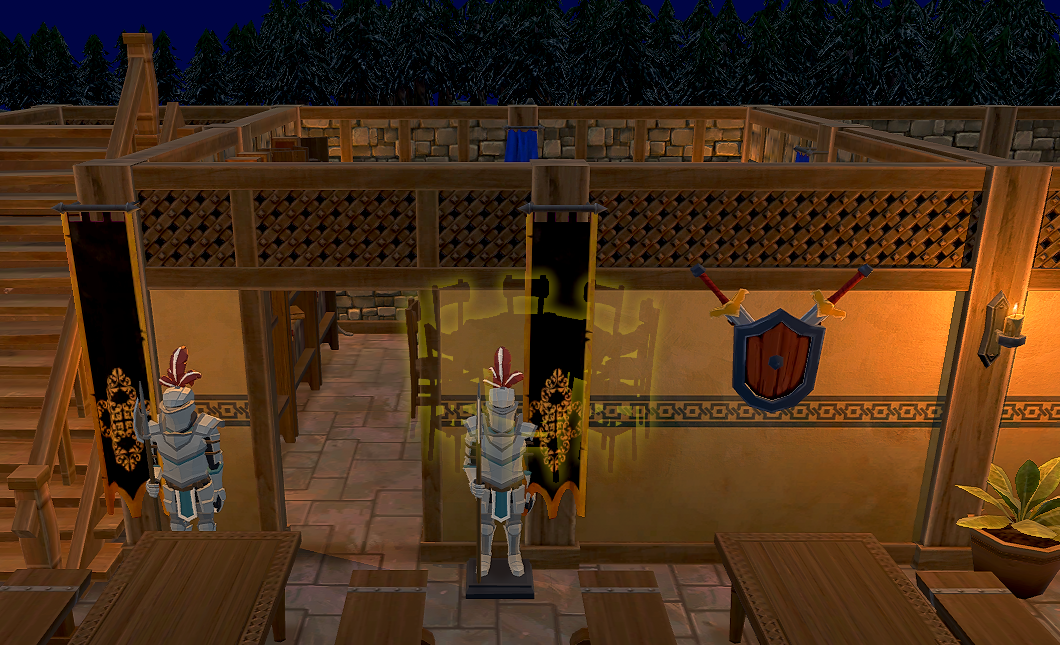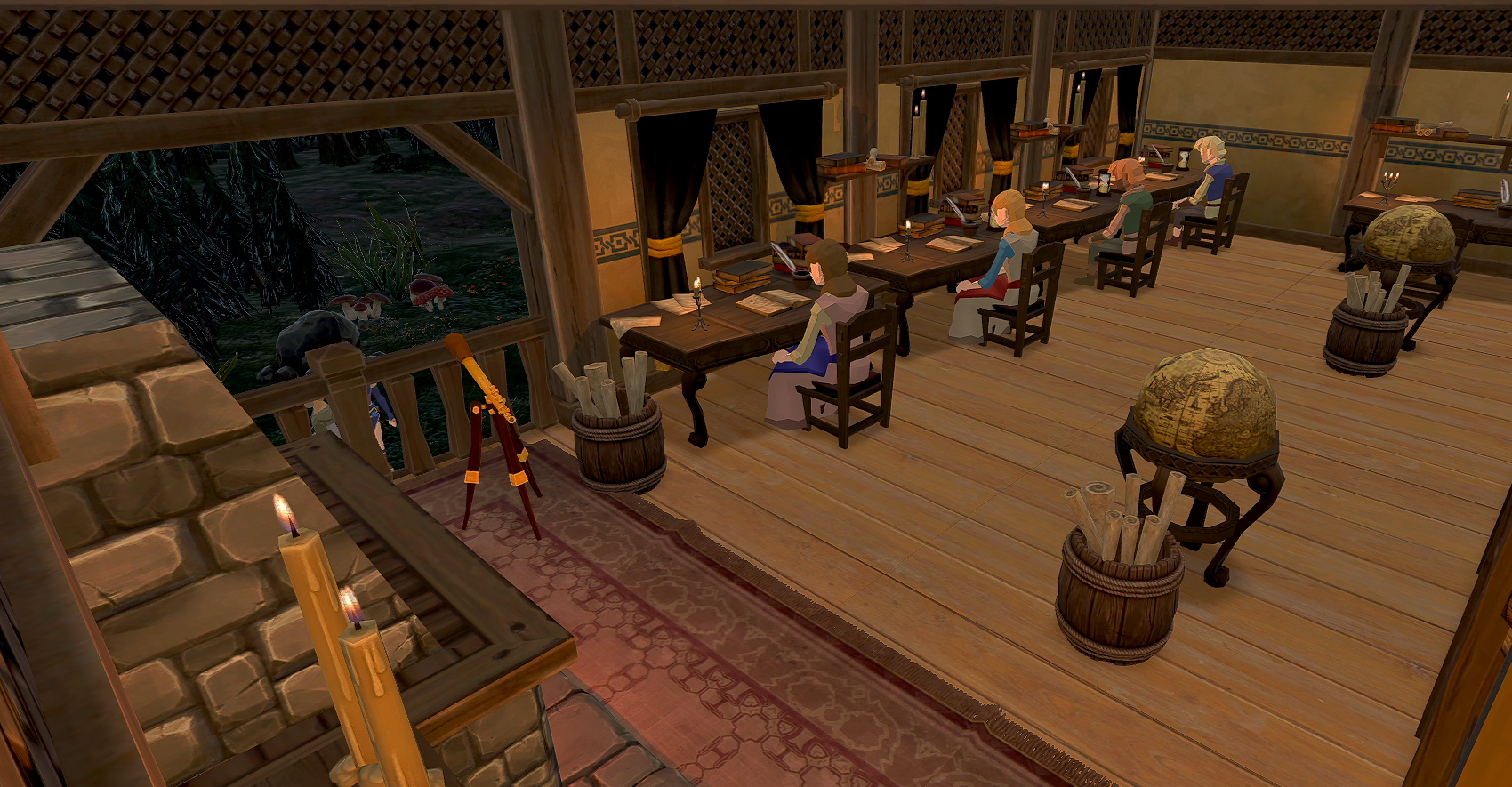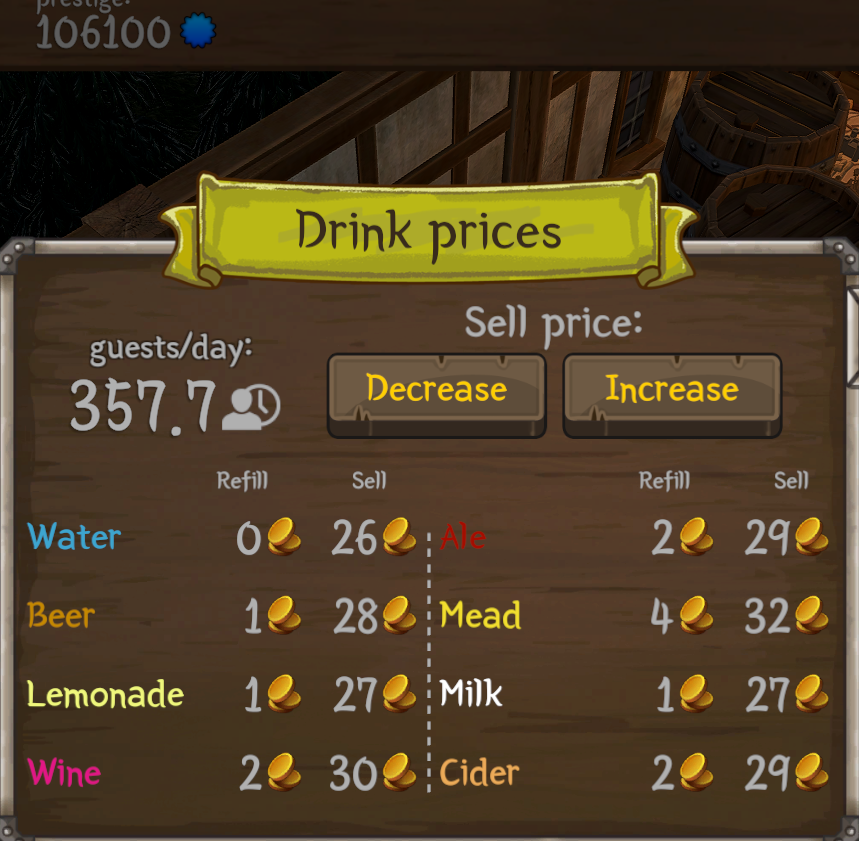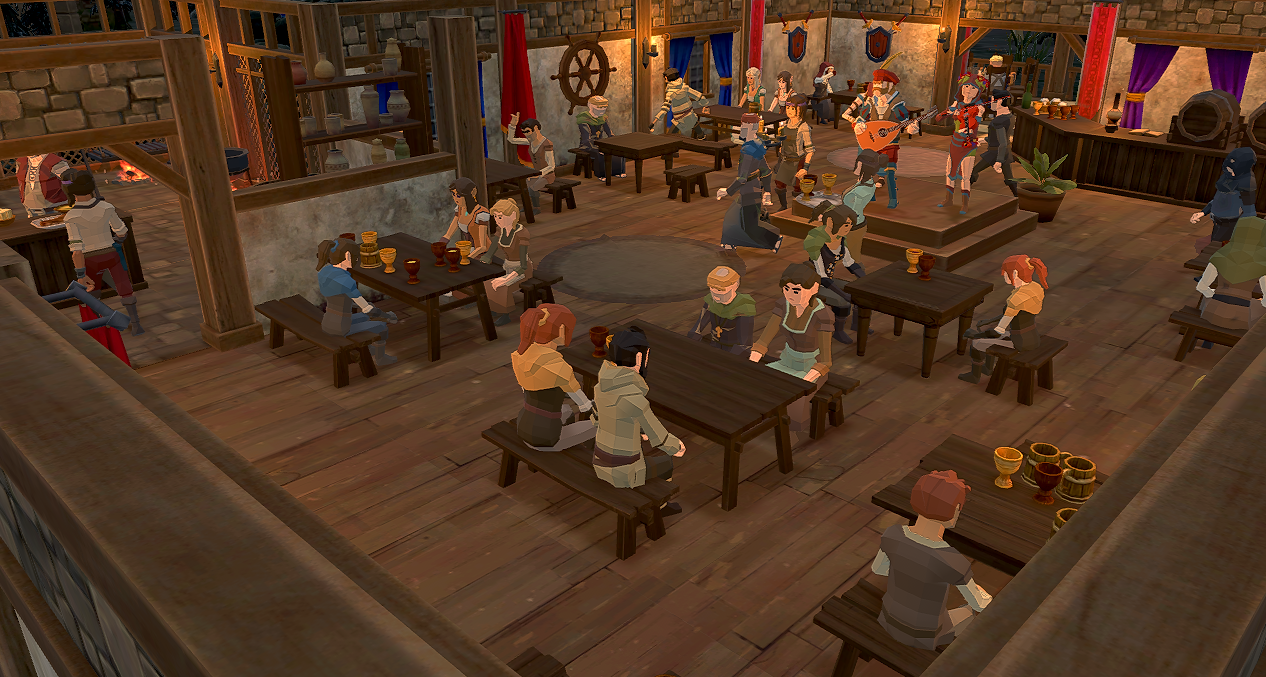Tavern Master: Beginner’s Guide – Tips & Tricks
The charming and relaxed atmosphere of Tavern Master captivates players with its unique appeal. Set in a medieval world, it skillfully engages the inner entrepreneur in every player without overwhelming them with excessive micromanagement or action. Meanwhile, it offers a rich array of content that ensures long-lasting entertainment.
Much like quality ale, Tavern Master has also managed to achieve the right balance between gameplay, entertainment, and task management.
Overview
You take control of a tavern from an isometric view. There are no avatars marching around the kitchens, barking out orders, or handling the money. You get a basic user interface that breaks the entirety of the tavern’s management down into 6 or 7 different windows that rarely go deeper than simple “build” and “buy” modes.

The gameplay loop is quite straightforward. You use gold coins to buy upgraded equipment that raises the tavern’s prestige. The success of your tavern is determined by balancing its prestige, profits, and equipment levels. The higher the prestige rises, the more people will come. Once enough people start showing up (too many people sometimes), you can raise prices to strike the most effective balance between making money and keeping the workload manageable for staff.
Tips & Tricks
- You begin with one bartender and one waitress and work your way up to having multiple bartenders, waitresses, and cooks. Water and beer are great, but soup is even better! Over time, you will unlock new recipes. The profits from the sales help you upgrade your dishes, and once upgraded, they bring in more money and attract higher-paying customers.
- Here is a quick tip just for new players just starting when doing quests; you get a coin, so remember to add stuff to your tavern right before you claim your coin; it helps greatly in the beginning. It also helps get you out of a bind if you accidentally buy too much and don’t have enough to pay your employees.
- If you’re expanding your tavern and building new walls, MOVE the items attached to old walls if they’re useful in the new areas before deleting the old walls! You don’t get full value for them, and they’re deleted with the wall. Then you lose cash by buying them back at full price.
- If you have a quest that requires you to earn a certain amount of money on any given day, you can always sell decorations to add to your ‘money earned today’ total.

- If one of your new quests for the next day requires stock/refilling, it’s best to do it after you’ve completed all of your new quests for the day.
- Once you can unlock Adventures, you can send adventurers out on little quests, such as collecting special ingredients. You use those to complete your own set of quests, to unlock more things, like kitchen recipes, paintings & floor tiles!
- Guards are hired to prevent thieves from stealing entire barrels from your bar, and musicians are hired to keep the guests entertained.
- Bringing in a variety of customers is necessary to complete research. Customers come in different tiers – gray, orange, yellow, and purple. Special events help you bring in a guaranteed number of higher-tier customers, as well as secure some extra funds. Research can unlock more staff members, more daily customers, more recipes, and more floors for your establishment.

- There are four types of guests, but there are different kinds of each type. As you can expect from a game set in medieval times, you have commoners, merchants, craftsmen, knights, executioners (a rather insane number of those as if there are millions of rebels to behead each day), pirates, Vikings, a wizard, and naturally the nobility.
- You pay adventurers to go on quests and acquire rare ingredients for your chefs to make more varied foods, but also to be able to host lavish parties for certain types of guests.
- You can place curtains over doors and torches/lanterns over banners/pictures.
- There are no tooltips for anything, so you have to do a little guesswork, for instance, who are the special guests you need for “research,” etc.
- You can color your tavern name by using HTML <color=#ff0000> Tavern Name </color>. You can use Google to find hex codes for the color you want above.
- You can also use <sprite index=0> to use a coin icon in the name. Try changing 0 to other numbers like 1, 2, 3, etc., to get different icons throughout the game.
- Don’t be afraid to hire & fire staff, from barkeeps, waitresses to scholars. If they are not performing well, get rid of them, or if they are fantastic at their job, give them a raise. As long as you keep them happy, they won’t quit.
Conclusion
Tavern Master doesn’t pose too much of a challenge, and the pace is more on the casual end. But it doesn’t make the game any less engaging because there are “daily quests” that will keep you involved in the decision-making process.
The game involves a fair bit of resources, money & time management, with a brief focus on decorations. If you like games where hours just slip by unnoticed while you’re having a nice time, then Tavern Master is perfect. Although a bit tight on space towards the mid-game, that may just be me being stubborn and over-generous with the decorations.














